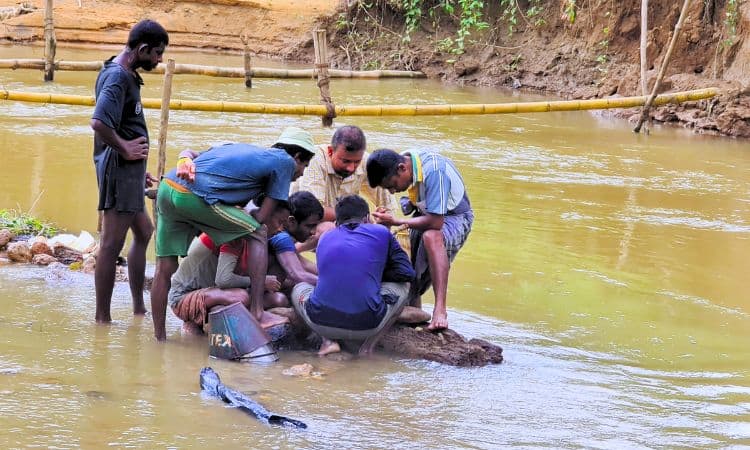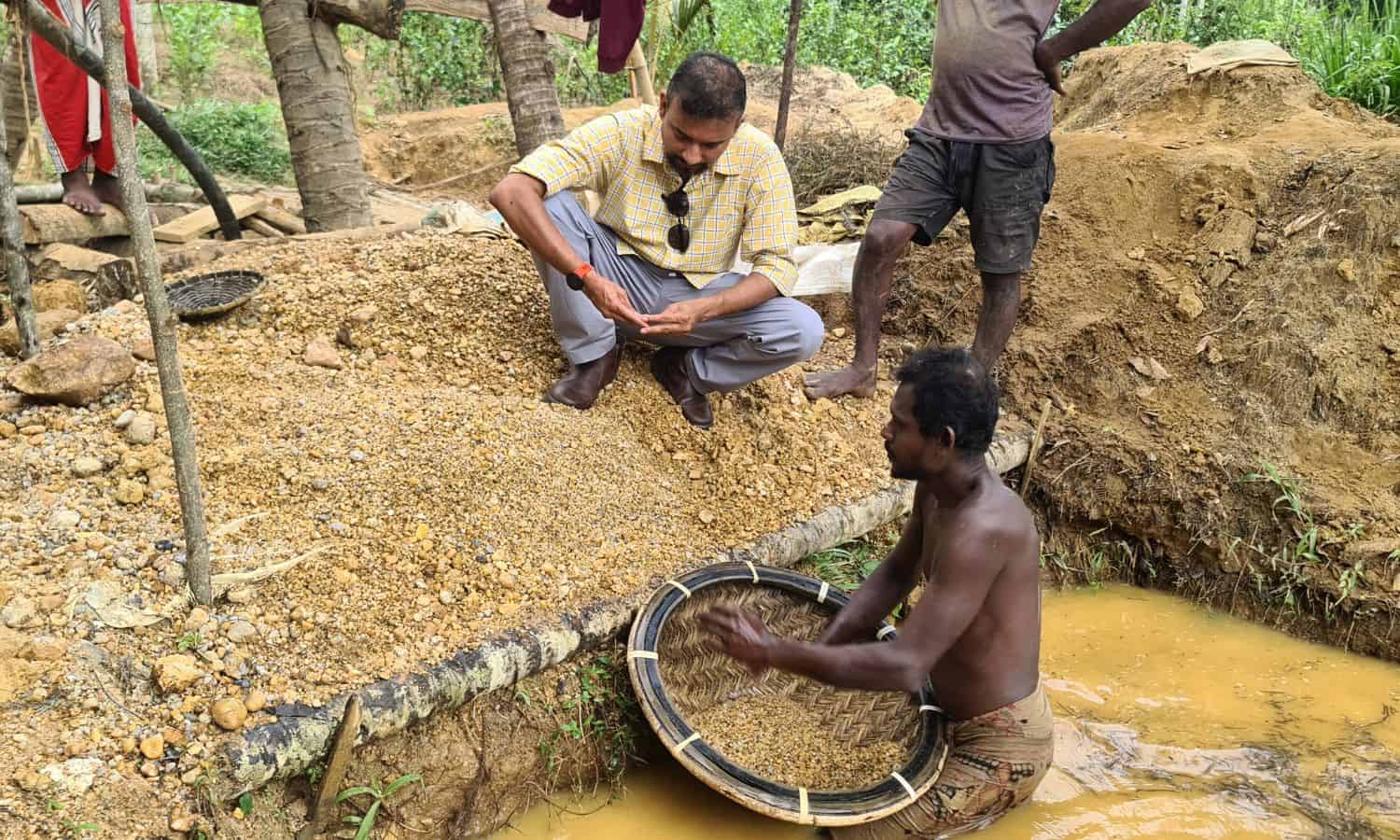Gem Mining in Sri Lanka and Thailand: History & Industry Insights
Gem Mining in Sri Lanka and Thailand: A Deep Dive into History, Methods, and Markets
For millennia, Sri Lanka and Thailand have dazzled the world with their spectacular gemstones. From the ancient riverbeds of Ratnapura to the markets of Chanthaburi, these regions have shaped the global jewelry industry with their unique mining traditions and exquisite stones. In this comprehensive guide, we explore the rich history, diverse mining methods, major gemstone varieties, and the cultural significance of gem mining in both Sri Lanka and Thailand.
The Legacy of Gem Mining in Sri Lanka
Sri Lanka, often referred to as the "Island of Gems," stands as one of the world’s most illustrious sources of precious stones. Its reputation spans more than 2,000 years, with historical records highlighting Sri Lankan sapphires and rubies adorning royals and dignitaries worldwide.
- Original source of Rubies and Sapphires: Sri Lanka’s gem fields have supplied high-quality stones since antiquity.
- Unmatched variety: The island yields not only sapphires and rubies but also a stunning range of colored gemstones such as spinel, garnet, and topaz.
- Unique corundum: Sri Lanka is the only source of the rare Padparadscha sapphire, prized for its delicate pink-orange hue.
Ratnapura: The City of Gems
At the heart of Sri Lankan gem mining lies Ratnapura, meaning "City of Gems" in Sinhalese. This ancient mining area is renowned for its abundance and diversity of gemstones. The region’s name itself is synonymous with the global gemstone trade.

sapphire mining in sri lanka in a river
Ratnapura is also home to the island’s most prominent gem market, attracting buyers and traders from all corners of the globe.
Mining Methods in Sri Lanka
Gem mining in Sri Lanka is characterized by its sustainable, alluvial techniques, reflecting both tradition and respect for the environment:
- Alluvial Mining: Most gemstones are extracted from riverbeds and ancient alluvial deposits, where centuries of natural processes have concentrated precious minerals.
- Manual Labor: Local miners use basic hand tools—such as picks, shovels, and baskets—preserving traditional knowledge and minimizing environmental impact.
- Share-Based Operations: Mining is often a speculative venture, where local workers operate on a share system, dividing any finds among themselves.

sapphire mining in sri lanka
Seasonality and Accessibility
Mining operations are closely linked to Sri Lanka’s tropical climate. Access to riverbeds and pits can be limited during monsoon seasons, when flooding and heavy rains impact both safety and feasibility.
Sri Lanka’s Gem Market: From Mine to Market
After extraction, rough gemstones are brought to local markets, the most notable being the Ratnapura Gem Market. Here, stones are graded, bought, and sold, with many destined for international auctions and high-end jewelry houses. Other significant markets include Beruwala, Colombo, and Elahera, each supporting a vibrant local trade.
Why Are Sri Lankan Sapphires So Coveted?
- Color Saturation: Sri Lankan sapphires are famed for their vivid, saturated colors—ranging from ‘cornflower blue’ to delicate pastel shades.
- Brilliance: The clarity and brilliance of these stones make them highly sought after by jewelers and collectors worldwide.
- Natural Untreated Stones: Many Sri Lankan sapphires are prized for being untreated, preserving their natural beauty and value.
Thailand: The Sapphire Powerhouse of Southeast Asia
Thailand is another pivotal player in the global gemstone industry, particularly renowned for its Blue Sapphires, which are considered among the world’s finest. The country’s gem mining traditions date back centuries and continue to innovate through advanced mining and cutting techniques.
Major Gem Mining Regions
- Chanthaburi: The most famous gem center, also home to a thriving household industry in gem cutting and polishing.
- Trat: Another significant mining district, contributing greatly to Thailand’s sapphire output.
Mining Methods in Thailand
Thailand’s gem mining industry employs a mix of techniques, from primitive to modern:
- Pit Mining: Traditional method involving shallow pits dug into gem-bearing soils.
- Mechanized Mining: In recent decades, more advanced machinery has been introduced for deeper and larger-scale operations.
Like Sri Lanka, mining areas in Thailand can be seasonally inaccessible due to monsoon rains, impacting the flow of rough stones to the market.
Chanthaburi: More Than Just Mining
Chanthaburi is not only a mining hub—it is also the center of Thailand’s gem cutting and trading industry. The city is famous for its skilled artisans who transform rough sapphires and rubies into sparkling finished gems, ready for the world’s jewelry markets. This household industry is a crucial link in the global gemstone supply chain, renowned for precision cutting and heat-treatment expertise.
Comparing Gem Mining: Sri Lanka vs. Thailand
| Aspect | Sri Lanka | Thailand |
|---|---|---|
| Main Gem Types | Sapphires (all colors), Rubies, Padparadscha, Spinel, Garnet | Blue Sapphires, Rubies |
| Key Mining Regions | Ratnapura, Elahera, Beruwala | Chanthaburi, Trat |
| Mining Methods | Alluvial, Manual, Share-based | Pit Mining, Mechanized, Household industry |
| Market Presence | Ratnapura Gem Market, Colombo | Chanthaburi Gem Market |
| Unique Fact | Home to Padparadscha sapphire | Renowned for advanced heat treatment and cutting |
Gem Mining and Local Communities
In both countries, gem mining is deeply intertwined with local communities. In Sri Lanka, mining is often a family or community affair, with profits shared among workers. In Thailand, small-scale mining and cutting provide livelihoods for thousands, with entire communities specializing in specific steps of the gem production process.
Challenges in Modern Gem Mining
- Environmental Impact: While traditional alluvial methods are less invasive, mechanized mining (especially in Thailand) requires careful regulation to protect ecosystems.
- Seasonal Access: Monsoon rains can halt mining operations for weeks or months, tightening supply and affecting local economies.
- Market Fluctuations: Global demand, ethical sourcing concerns, and the rise of synthetic stones all influence the profitability and practices of gem mining communities.
Tips for Gemstone Buyers
- Buy from reputable dealers with a clear sourcing history.
- Understand treatments: Many Thai sapphires are heat-treated to enhance color, while Sri Lankan stones are often prized for being untreated.
- Look for certification: Request gemological certificates to verify authenticity and origin.
- Explore local markets if visiting: Ratnapura and Chanthaburi offer unique opportunities to observe trading firsthand.
Conclusion: The Enduring Allure of Sri Lanka and Thailand’s Gems
From the legendary mines of Ratnapura to the bustling gem markets of Chanthaburi, Sri Lanka and Thailand continue to enchant the world with their extraordinary gemstones. Grounded in centuries-old tradition yet adapting to modern demands, these countries remain at the heart of the global jewelry trade. Whether you are a collector, jeweler, or simply a gemstone enthusiast, understanding the heritage and industry behind these sparkling treasures adds a new layer of appreciation for every jewel you encounter.
Want to learn more? Explore our guides on gemstone buying, ethical sourcing, and the fascinating stories behind the world’s most coveted stones.



Comments (0)
Write your review